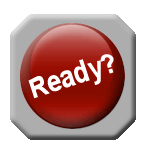Heroes can’t be lazy. They have to be heroic, so give them something to do. Create an interesting and dangerous character to oppose the hero. Create the perfect setting in which they can do battle. But how should the hero do battle?
Tip #3: Read Techniques of Selling Writer.
This timeless book, written in the 1960’s, has guided countless thousands toward publication. I heard about it from writer resource lists on several author web sites. It’s a very popular book.
Dwight Swain fascinates me with his detailed explanation of how to bring a story to life. I’ve marked up this book cover to cover with pencil, pen, and highlighter. My copy has dog-eared pages, bookmarks, and sticky notes in it. Why? The generous instruction draws me back to continue re-reading the book several times.
But the best way to learn to write is to write. And the best place to begin is at the beginning. Swain’s tips on how to open a story are logical, practical, and valuable.
He teaches on the purpose of the focal character, how to develop a villain properly, and when to add second-by-second details. The way he categorizes story parts into scene and sequel helps a writer organize the events and give the proper amount of time to each event. His tips on building conflict and how to control pacing are also noteworthy.
What is a story? According to Swain, it’s how somebody deals with danger. Little Red Riding Hood had to deal with danger. So did Huckleberry Finn and Scarlett O’Hara. A good story has danger in its beginning, middle, and end. A hero who doesn’t deal with danger isn’t in a story.
For more information about Techniques of Selling Writer by Dwight V. Swain, get a copy for yourself.
Coming in January: more tips to improve heroes.
Subscribe to:
Post Comments (Atom)







No comments:
Post a Comment